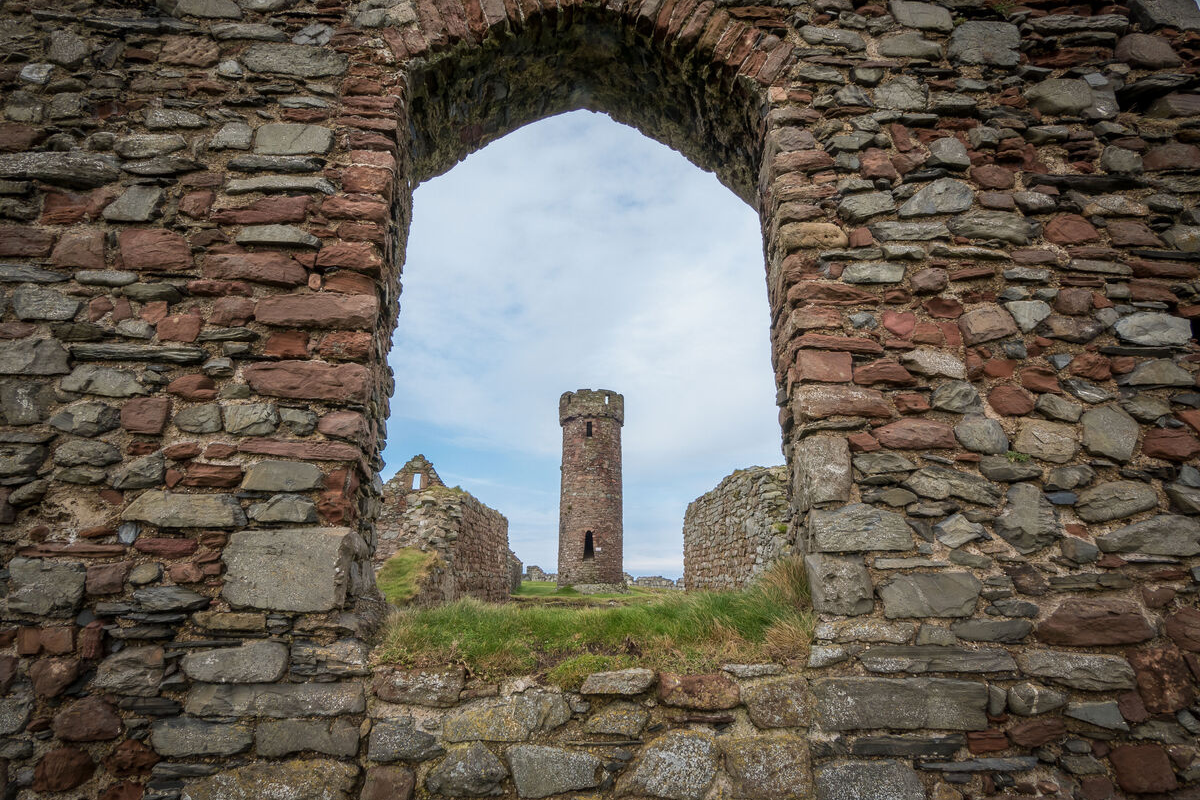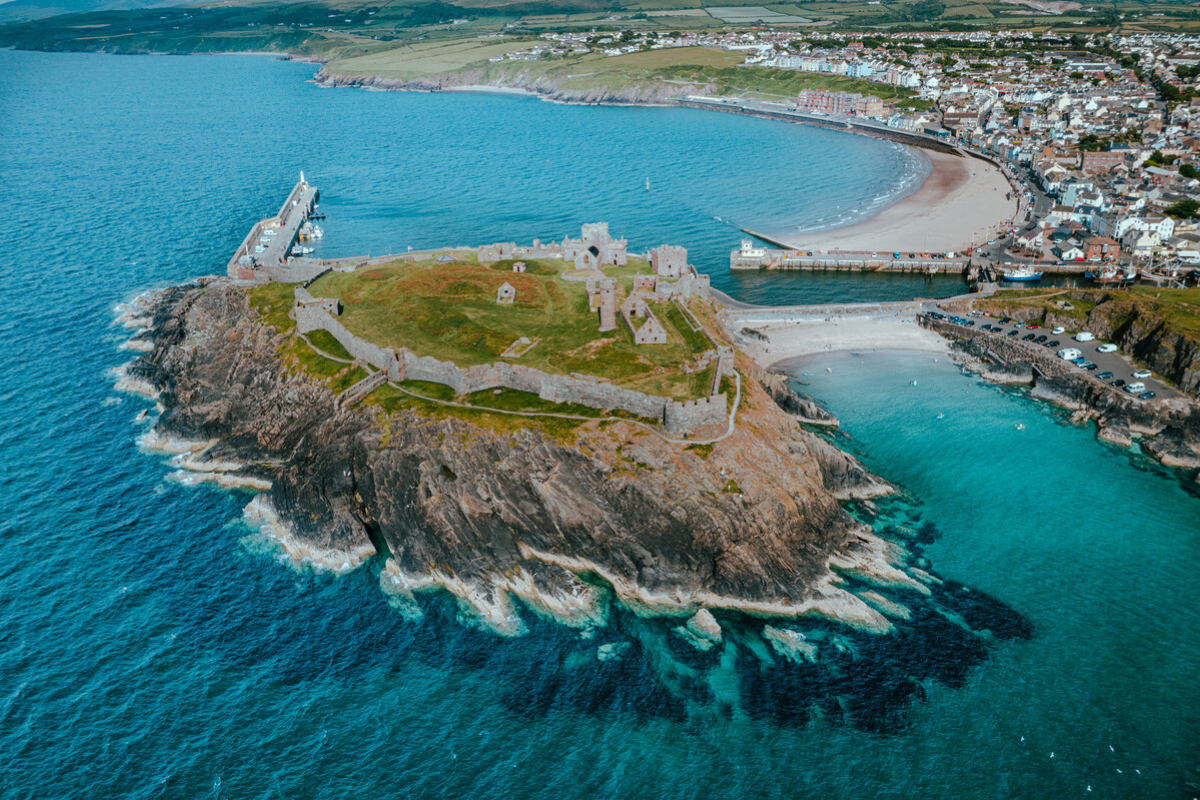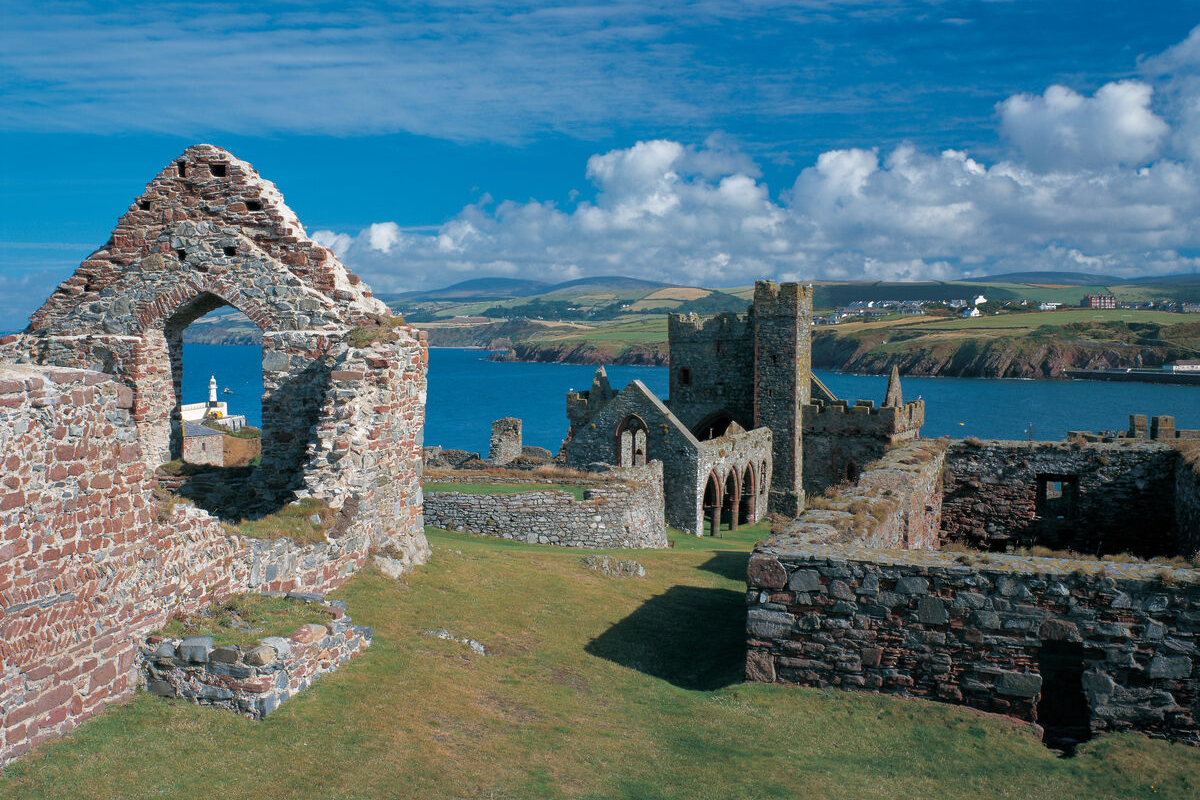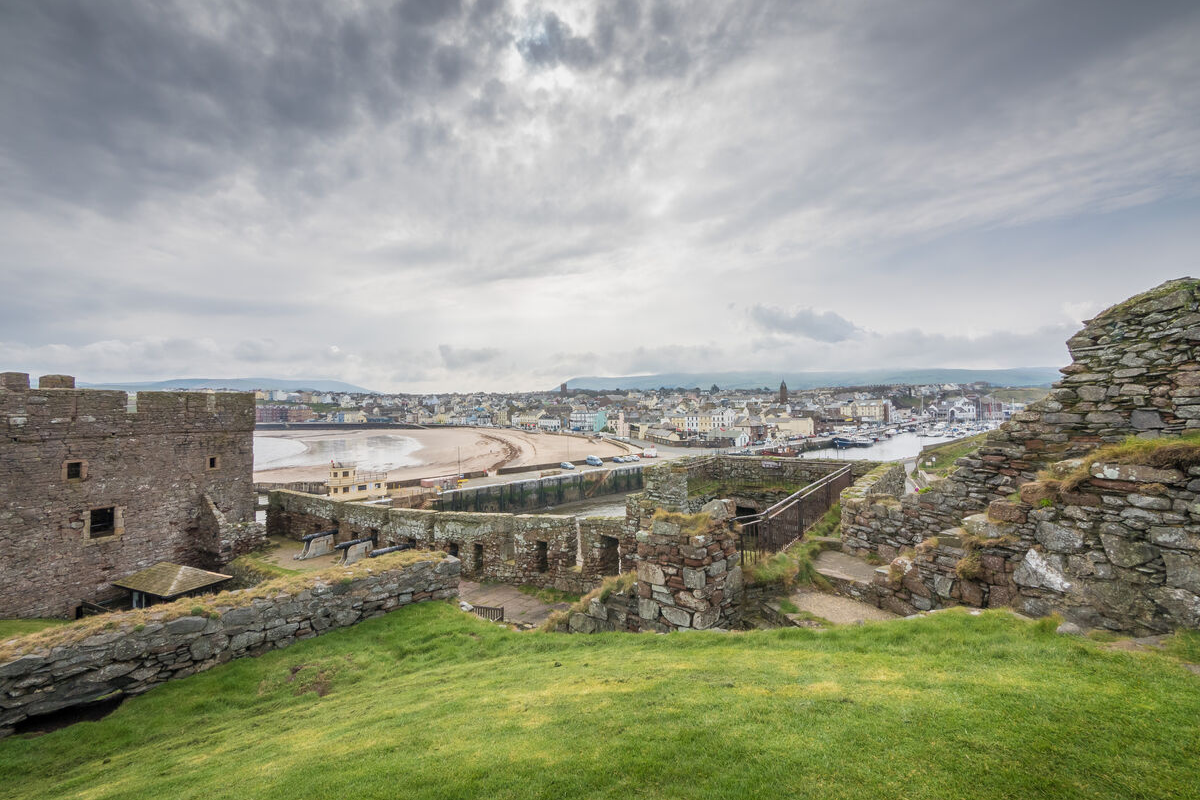Peel Castle is built on St Patrick’s Isle, a small islet off the coast of Peel. Its namesake comes from Saint Patrick, who it is told visited the islet and brought Christianity to the Isle of Man in around 550 AD. Taking a tour of Peel Castle is a wonderful thing to do for anyone visiting to the Isle of Man, especially those interested in Manx history and culture!
Iron Age Settlement
Before the time of Saint Patrick the islet was in use, with the earliest discoveries on St Patrick’s Isle dating all the way back to the Iron Age! Underneath the medieval buildings lie the remains of a settlement, believed to have existed here from the 8th century BC. Archaeologists discovered rings of holes cut into clean sand over 1 metre below the ground, the only signs of the wooden posts which formed walls of at least nine roundhouses.
Religion on St Patrick's Isle
The Church of St Patrick, the roundtower, and the small chapel to the north of the church are the earliest standing remains of the ecclesiastical community that once occupied the islet. It’s believed that a monastery existed there from at least the 8th century AD, with evidence in the form of burials.

Roundtowers were a common monastery feature in Ireland and were used as refuges against attacks on monastery riches. Peel Castle’s roundtower has a battlemented top, due to the building being used as a look-out in later centuries, but originally had a conical roof like its counterparts in Ireland.
The beautiful Cathedral was built in later years with its oldest parts dating back to the 13th century AD. It possibly incorporates an older 12th century structure, suggested by protruding masonry visible on its outside wall in the prison yard. The crypt, which would have been built to house holy relics, became a prison for offenders against the church from the 17th century.
.png)
On the islet also lies a cemetery that was home to one of the most extraordinary pagan Viking graves to have been found in the British Isles, known as that of the Pagan Lady. This wealthy woman was from circa 950 AD and was buried with a number of notable items, the most incredible being her necklace which is now on display at the Manx Museum. This piece of jewellery was made from 73 glass, jet, and amber beads that came from Britain and Europe, with some being 300 years old when the woman wore it. Other items included a cooking-spit, knives, a comb, shears, and needles. What’s more, despite only excavating a fraction of the cemetery, archaeologists were able to identify nearly 330 separate burials.
Peel Castle Fortifications
In the 12th century, Peel Castle was built on St Patrick’s Isle for Viking king, turning the islet into a defensive stronghold. Over the years there were many additions and changes to the castle, each with its own story to tell.
A prominent feature is the late 14th century gatehouse and the red sandstone curtain wall to each side of it. Both were built by William LeScrope as protection from a ‘main island’ attack, due to the islet joining up with Peel except for at high tide. The gatehouse had both a guardroom and living quarters, notably being built with a vault above the ground floor so that there was no timber flooring that could be set fire to. Additionally, the gatehouse itself was protected by a barbican that was used to fire missiles at attacking parties.
Another notable feature is the loopholed wall which was added in the 17th century by James Stanley, the 7th Earl of Derby, who improved fortifications around the Isle of Man to hold it for the royalist cause in the English Civil War. The wall provided cover for musketeers as they fired at intruders. This was preceded by the green curtain wall that was built in either the late 15th or early 16th centuries to protect Manx interests against raids from Scotland, due to the ruling Earls of Derby actively fighting for the English against Scotland.

Some other parts of the castle that were critical for defence are the half-moon battery that was built in the 16th century to launch cannon, as well as the 16th century armoury that was used to store weapons, ammunition, and gunpowder. At this point in time the Catholic Spain was looking to overthrow Protestant England, attempting to upset England’s communications with Ireland in the process. Being located between England and Ireland, the Isle of Man enhanced Peel Castle’s fortifications to better defend itself against attack from sea.
Peel Castle is a must-see attraction for visitors to the Extraordinary Isle. More information about visiting Peel Castle can be found here.








Comments
Comments are disabled for this post.